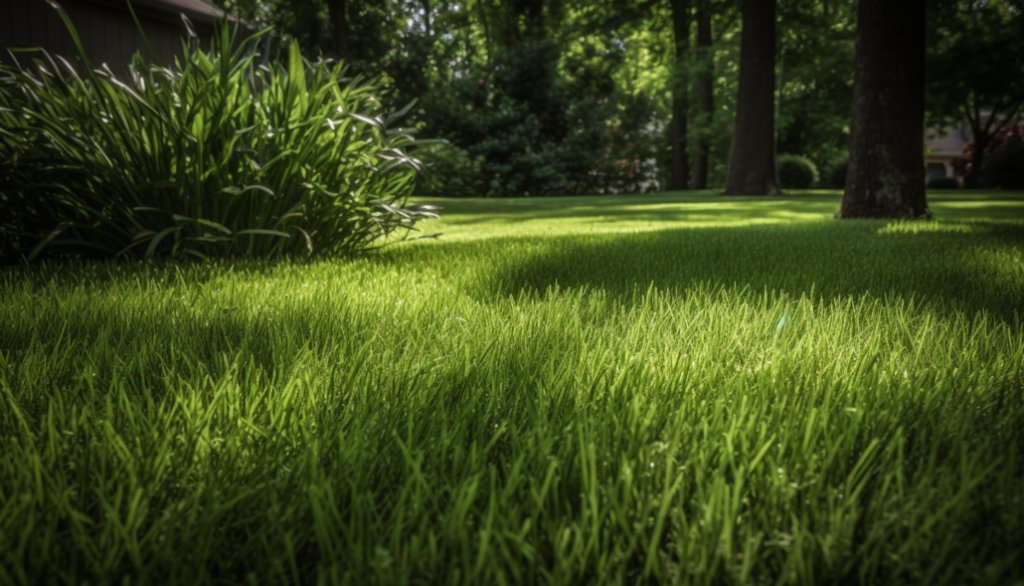

Unveiling lawn care secrets is essential for achieving a lush and healthy yard. A vibrant, green lawn is a prized possession for many homeowners, symbolizing pride of ownership and a welcoming aesthetic appeal. Unfortunately, achieving this idyllic landscape often requires a deep understanding of the intricacies of lawn care. This comprehensive guide to lawn care secrets will address common problems and equip you with the knowledge and tools needed to cultivate a thriving lawn that you can be proud of. This article will delve into vital aspects of lawn care, including proper watering, fertilization, and mowing practices. We’ll also explore strategies for weed control, pest management, and diagnosing and addressing common lawn diseases. By the end, you’ll have a clear roadmap for achieving a gorgeous lawn that you can enjoy year-round.
Watering: The Foundation of Healthy Lawn Care
Importance of Proper Watering Schedules
Effective lawn care starts with understanding the significance of proper watering. A consistent watering schedule is crucial to keeping your grass healthy. Water deeply and less frequently, allowing the moisture to penetrate deep into the soil. This encourages the roots to grow deeper, leading to a more resilient and drought-tolerant lawn. Overwatering, on the other hand, can lead to root rot and other problems. The goal is to provide just enough water to keep the grass hydrated without overdoing it. In areas with high temperatures, daily or twice-daily watering may be necessary, while in cooler climates, your watering routine can be adjusted accordingly.
Understanding Different Watering Techniques
There are several approaches to watering your lawn, each with its own set of benefits. Sprinkler systems are convenient but can be wasteful if not used correctly. Use adjustable nozzles to focus water precisely where it’s needed. Soaker hoses, on the other hand, allow for deep watering while minimizing evaporation. Drip irrigation systems, often used in conjunction with raised beds or container gardening, offer precise, targeted watering. Proper watering ensures the soil retains moisture throughout the day, giving your grass a better chance of survival during heat waves. Using a moisture meter can help you determine exactly when and how much water your lawn needs, minimizing waste and maximizing efficiency. Different grass types have different watering requirements, so consult local resources for specific guidance based on your geographic region and the particular species of grass in your yard.
Fertilization: Nourishing Your Lawn
Choosing the Right Fertilizer
Fertilizing your lawn provides essential nutrients for healthy growth and vibrant color. Choosing the right fertilizer is key to avoiding over-fertilization. Understanding the specific needs of your grass type is paramount; certain grasses may require specific types of fertilizers to thrive. Different fertilizers cater to various lawn care requirements. For example, slow-release fertilizers provide a steady supply of nutrients, avoiding the need for frequent applications. Consider consulting local garden centers or agricultural extension offices for recommendations on appropriate fertilizer types and application rates for your region and grass variety. Incorporate a soil test to determine the precise nutrient levels in your soil. This will allow you to tailor your fertilization strategy for optimal results, without damaging your lawn.
Mowing: Maintaining the Right Height and Frequency
Determining Optimal Mowing Height
Mowing plays a critical role in lawn care, affecting not only aesthetics but also overall health. Proper mowing height is essential for healthy turf. Cutting at the proper height promotes vigorous growth and reduces stress on the grass from environmental factors. Using a lawn mower with sharp blades is crucial to ensure a clean cut without tearing the grass blades. Different grass types, like zoysia, Bermuda, and Kentucky bluegrass, require different mowing heights for optimal results and overall lawn health. Research your specific grass type for the best practice recommendations.
Establishing a Consistent Mowing Schedule
Establishing a consistent mowing routine helps maintain a healthy lawn. Mowing frequency is directly correlated to the lawn’s growth rate and the overall health of the grass. Depending on the weather conditions and the type of grass you have, the mowing frequency should be adjusted. During peak growing seasons, you may need to mow more frequently to maintain a desired length. Use these factors when determining your specific mowing schedule.
Weed Control: Preventing Unwanted Guests
Identifying and Addressing Common Weeds
Weed control is an essential aspect of lawn care, preventing unwanted plants from taking over your yard. Proper weed identification is essential for targeted treatment. Different weeds respond differently to control methods, and ignoring them can lead to a significant increase in their numbers, affecting the overall health of your lawn. Using the appropriate method for different weed types helps avoid damaging your grass. Consider spot treatments for isolated weeds, or targeted control for more widespread issues.
Pest and Disease Management: Protecting Your Lawn
Recognizing Common Lawn Pests and Diseases
Protecting your lawn from pests and diseases is crucial to maintaining a healthy and vibrant lawn. Recognizing the signs of common lawn diseases and pests is essential to take prompt action. Common pests include grubs, slugs, and snails. Diseases include fungal issues like brown patch and leaf spot. These problems can lead to significant damage if left untreated.
Soil Health: The Foundation of Lawn Vitality
Understanding the Role of Healthy Soil
Soil health plays a critical role in lawn vitality, influencing everything from nutrient absorption to water retention. Healthy soil is essential for a vibrant lawn. Ensure that your soil has the right balance of nutrients to support healthy grass growth. Regular soil testing can help you determine the best approach to lawn fertilization, watering, and care. Understanding your soil type is essential to understanding its nutritional requirements, enabling you to implement appropriate fertilization practices.
Improving Soil Structure and Drainage
Improving soil structure and drainage is crucial to ensuring a healthy lawn. Compacted soil can hinder root development, leading to poor water absorption and nutrient uptake. Adding organic matter, such as compost, can improve soil structure and aeration. Proper drainage systems are crucial to preventing waterlogging, a common issue leading to lawn damage.
Choosing the Right Grass Type for Your Region
Importance of Understanding Local Grass Varieties
Understanding the suitable grass types for your region is crucial to maintaining a healthy and thriving lawn. Different grass varieties are suited to different climates and soil conditions, and selecting the correct grass for your region is key to creating a beautiful lawn that thrives. Local climate conditions and soil types are key factors influencing the type of grass you can successfully grow and maintain in your lawn. Conduct research and consulting to determine the best grass for your area, ensuring it is well-suited to the local climate and soil conditions.
Using Lawn Care Products Effectively
The Importance of Choosing the Right Tools and Products
Proper use of lawn care products is essential to maintaining a healthy and visually appealing lawn. Utilizing the correct tools and products is key to achieving your desired aesthetic. Avoid using excessive amounts of any product, and always follow the instructions on the product label to prevent harming your lawn. Seek advice from experienced professionals for specific recommendations and applications based on your lawn and environment. Following these guidelines minimizes the risk of damaging your grass, ensuring optimal results without causing harm.
Seasonal Lawn Care Practices
Spring Lawn Care Strategies
Spring lawn care is crucial to setting the stage for a vibrant and healthy summer lawn. Starting with a thorough clean-up removes dead leaves and winter debris to promote healthy grass growth. Aerating the lawn can improve soil structure and air circulation, and appropriate fertilization during spring ensures healthy grass growth throughout the season.
Summer Lawn Care Strategies
Summer months demand careful attention. Watering deeply but less often is crucial. Inspect your lawn for diseases or pests regularly, as hot weather conditions can lead to increased problems. Adequate sunlight and sufficient hydration are essential for lawn health during the summer months. Maintaining regular mowing practices to maintain the grass’s health is also crucial for the aesthetic of your lawn and preventing the grass from being overgrown.
Fall Lawn Care Strategies
Preparing your lawn for winter is vital for its long-term health. Fall is when you can complete essential tasks like cleaning up any remaining debris or dead leaves and apply the final layer of fertilizer before the first frosts arrive. Preventing diseases and pests is crucial during the fall to ensure the lawn maintains its health over the winter months. These preventive measures can significantly protect the grass from harmful elements and diseases, preparing it for the onset of winter.
Frequently Asked Questions
Q: What are the most common lawn care mistakes that homeowners make?
A: Many homeowners make the mistake of neglecting proper watering schedules, leading to inconsistent growth and potential stress on the grass. Another prevalent mistake is over-fertilizing, which can harm the lawn’s health. Inadequate mowing height and infrequent mowing can also contribute to poor lawn health. Finally, improper weed control can lead to an abundance of unwanted plants competing for resources. Addressing these issues can significantly improve the overall health of your lawn and prevent future problems.
Q: How often should I water my lawn, and what are the best watering techniques?
A: The frequency of watering depends on your local climate, soil type, and grass type. You should aim to water deeply but less frequently. Watering deeply encourages the roots to grow deeper, making the grass more drought-tolerant. Using a sprinkler system with adjustable nozzles can help optimize water distribution and prevent overwatering. Consider using soaker hoses or drip irrigation for a more targeted and efficient approach. Monitoring the moisture content of your soil is key to determining the right watering frequency for your specific lawn care needs. Tools like moisture meters can help you do this.
Q: What is the ideal mowing height for a healthy lawn?
A: The ideal mowing height depends on the type of grass you have. Generally, mowing at the recommended height for your grass type promotes a healthy lawn by encouraging vigorous growth and a dense turf. A good rule of thumb is to cut your grass no shorter than 2-3 inches, as this promotes healthy root development and reduces the risk of stress from heat and drought.
In conclusion, achieving a lush and healthy lawn requires a combination of meticulous lawn care secrets and a sustainable approach. By understanding and implementing the tips outlined in this article, you’ll be well on your way to cultivating a vibrant, envy-worthy lawn. Remember to prioritize proper watering, fertilization, and mowing practices. Consistent upkeep and a proactive approach will yield the best results. Ready to transform your lawn? Visit our website today for expert advice and top-quality lawn care products!